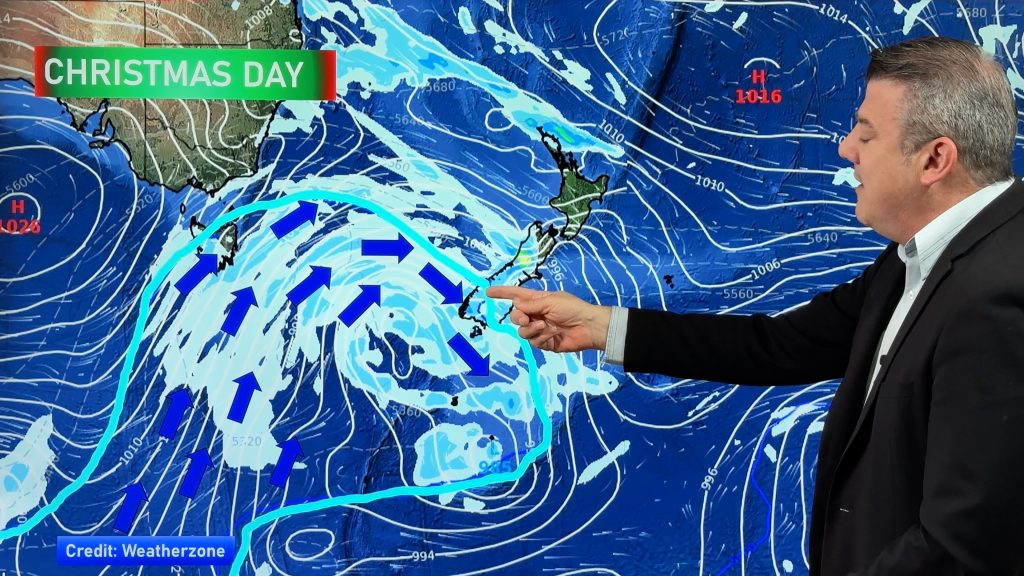
> From the WeatherWatch archives
Lusi may have dumped significant amounts of rain over some parts of New Zealand but large dairy farming portions of the western North Island missed out.
Driest regions remain western Northland, parts of Auckland (alhough most of Auckland received rain from Lusi), Waikato (western and central areas had little while eastern areas were saturated) King Country Wanganui and Manawatu.
Some viewers to CountryTV and WeatherWatch.co.nz, who are from those regions, say conditions are drier than in last years historic drought.
While generally there has been higher rainfall so far this year than last, many farmers say the windier weather has seen any rain evaporate quickly in 2014.
Long range models pick little in the way of substantial rain for the North Island in the coming 10 days.
Another cyclone will be dropping southwards this weekend – this time to the east of New Zealand – and is unlikely to reach the country at this stage, due to high pressure over New Zealand and the Tasman Sea. It may drive in large and dangerous swells to the North Island’s east coast this weekend or next week.
A few showers are possible this Friday and weekend in some northern areas – but for most needing rain it will barely be a drop in the bucket. Showers may even turn to rain in western Northland on Saturday – but it’s unlikely to be widespread across the region. We’ll keep you posted on future possible rain events.
– Homepage image / Zach Knight
– WeatherWatch.co.nz
Comments
Before you add a new comment, take note this story was published on 19 Mar 2014.




Add new comment
Lee Sloper on 20/03/2014 12:47am
Tis a worry. We depend on mountain rain for our water supply. The stream has been running very low since January and we’re on the emergency bore water. What we need is a dirty big Nor Wester full of moisture to blow in with several days of good steady precipitation, with no downpours, hail, sleet or other rubbish. This year the weather has been so nutty that it is worth a laugh. Last week during the anticyclone there was light rain for a short time on Mt Wainui behind us. LOL it dropped our pressure from 1015 to 991, even though we stayed bone dry with a clearish sky. Seeing that more and more and those pressure drops won’t do us much good in winter. After that passed it rose to 995 and refused to budge any further, still in the anticyclone with all surrounding areas on high pressure. That’s the SE for ya, it thinks that we are a mountain, when we are at sea level.
Reply
Guest on 19/03/2014 10:58pm
With virtually no sign of measurable rain in the forecast out to the end of this month and the current P.N. total at 8.8mm this is set to be the driest March here since records began in 1928. This will also be the driest ENSO Neutral Phase (La Nada) drought recorded in that period as well. The final total of rainfall for the Nov-Mar period will be 190mm, which is 30mm less than last year. The upper Manawatu has been a bit wetter than last year though. A line from Bulls to the Manawatu Gorge divides the two regions.
Other notable La Nada droughts in this region include 1947-48 with 203.6mm for the Nov-Mar period, 1977-78 with 200.8mm, and 2002-03 with 205.0mm. The interesting thing is that the plotted profile of these five La Nada droughts shows two types. Type 1 starts with a fairly dry Nov followed by a normal (wet) Dec, before plunging into a very dry J-F-M (2003 being the exception when it continued into Apr). The Type 2 form has N-D-J running at around 50% of the long term mean followed by a plunge into low figures for the Feb-Mar period. 77-78, 02-03, and 2012-13 were Type 1 droughts. 1947-48 and this year are Type 2. If this year sticks to the profile of 1947-48 then at some stage during April and definitely in May we might expect well above average rainfall for the lower N.I., possibly 150mm+ to 250mm+ for each month! Nature has a way of making up the balance, sometimes in a rush.
Reply
Guest on 20/03/2014 7:02pm
An updated forecast has a small low developing over the Central Districts in the middle of the front moving up the country on Tuesday afternoon and passing through overnight and into Wednesday morning. That could bring this year’s Nov-Mar total much closer to the past drought totals in the end.
Reply
Ian Cooper on 21/03/2014 11:55am
That possible depression anomaly around the Central Districts area late Tuesday & into Wednesday looks to be evaporating under the influence of the approaching high. Chances are now stronger for the staus quo. The La Nada influence continues. For those of us who enjoy a good drought, and we are more than you might tell, this is a ‘Celebration Day.’ The first day of Autumn and the sun continues to shine! Long may it do so. The water will return, but we may not like the way it comes back.
Reply